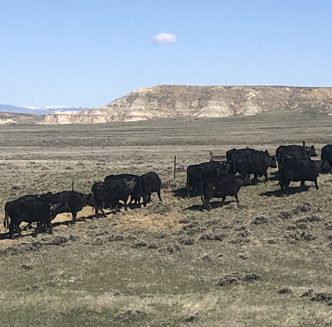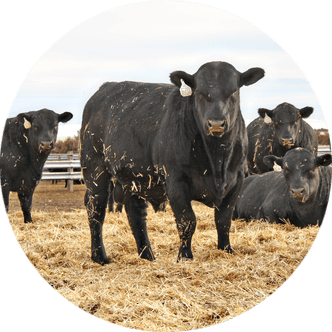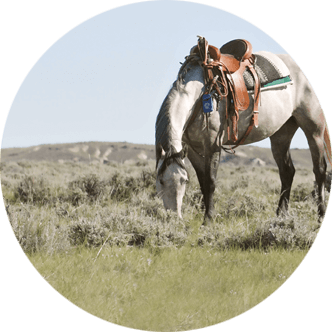Be Mindful of Leptospirosis This Spring
by Sara Flexor
Spring is here and it’s time for gardening, kids in sandboxes and swimming in ponds and creeks. Spring rains and snowmelt can cause flooding, as well as animals coming out of hibernation to look for easy sources of water and food.
All of these seemingly innocent activities can come with dangers hidden in soil and water sources which can lead to illness in humans, pets and livestock.
Leptospirosis
Leptospirosis (lepto) is a bacteria shed in the urine of a multitude of animals and can contaminate water and soil. The bacteria can remain active for weeks or months even, causing a wide variety of symptoms and severity of illnesses.
Lepto has two main forms – acute and chronic.
The chronic form is often silent and more likely to cause severe reactions in animals, while acute will cause fever, jaundice and general malaise.
Chronically-affected animals remain carriers and shed organisms for several months without showing clinical signs.
Lepto symptoms can range from mild flu-like symptoms to kidney failure and internal hemorrhage.
Lepto is generally passed on to humans from open wounds or mucus membranes such as the eyes or mouth. The bacteria can be passed into the soil from cows, pigs, horses, porcupines, dogs, cats, skunks and fox, to name a few.
According to the Beef Cattle Handbook, the incubation period is around three to seven days, and the clinical signs of illness last three to five days.
Signs and symptoms
Lepto in cattle can produce an abortion rate of up to 30 percent if contracted in the final trimester of pregnancy. Ten percent of all cattle abortions are attributed to lepto. However, knowing if reproductive losses are due to this bacteria can be hard to pinpoint, as producers may not notice the cow has lost her calf or has returned to heat.
However, if an individual does find an aborted fetus, having it assessed at a veterinary lab will help with a more definitive answer.
Other issues in cattle include going back into heat after being pregnant, stillbirths, premature or weak calves or blood in the milk of cows.
In swine, lepto also causes abortion, stillbirth or weak piglets, along with jaundice and acute kidney failure.
Horses show fever, abortion, kidney failure and uveitis, a severe eye infection which can also be found in humans.
Dogs, especially cattle dogs, are at risk for infection. Symptoms may cause kidney disease, liver disease, muscle pain and stiffness.
Cats and sheep are carriers but do not show symptoms, so they are considered resistant but can still actively shed the bacteria.
Human symptoms of lepto infection may include fever, severe headache, chills, muscle aches and vomiting. Jaundice, eye infection, rash and abdominal pain are additional symptoms.
If left untreated, lepto can cause kidney failure, liver failure, meningitis, respiratory disease and death.
The good news is lepto has not been shown to spread from person to person.
Prevention and control
Prevention of lepto is key, as diagnosing the infection can be difficult. The blood test is hard to interpret, especially if livestock have been vaccinated, as there will be residue of the antibody in their blood, further confusing results.
Lepto can be successfully treated with antibiotics in animals and in people if caught in early stages.
Good management practices can help prevent this bacteria. Rodent control, especially around feed sources and water; fencing out swampy areas; prevention of urine drainage into water sources; limiting swine exposure to other livestock and cleaning and disinfecting pens and other areas infected cattle have been in will help keep this bacteria at bay.
Avoid swimming in water which may be contaminated with animal urine, and wear gloves when digging in soils that may have been used by animals. This will help diminish human infection.
Besides good management protocol, vaccination is the best control method for livestock. Yearly vaccination in closed herds is recommended. If adding additional animals, vaccinating every six months is suggested.
The vaccine commonly used is five-way lepto vaccine and can be found separately or included with other vaccines.
Lepto vaccines are inactive so vaccination of pregnant or nursing animals is considered safe, but the recommendation is to vaccinate six to eight weeks prior to breeding. Don’t use bulls that have tested positive for lepto until they have been treated to eliminate shedding materials and then have been tested and found to be disease free.
If a herd sees an infection, especially when pregnant cows are involved, treatment and vaccination of all animals will help reduce spread and slow abortions if treated early.
Being mindful of environments susceptible to animals that are known carriers of lepto will help in preventing the contamination and spread of lepto. The migration from animals to humans makes this bacteria one to be careful of coming into contact with.
Sara Fleenor is the University of Wyoming Extension agriculture and natural resources educator serving Crook County. She can be reached at sfleenor@uwyo.edu or 307-283-1192.





